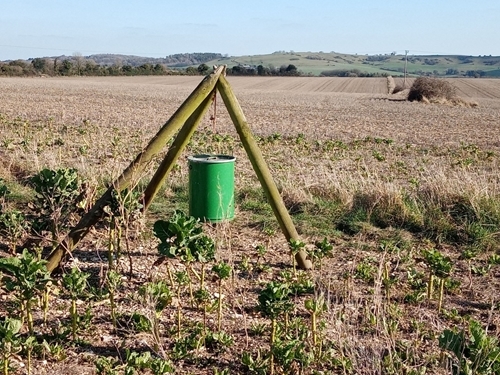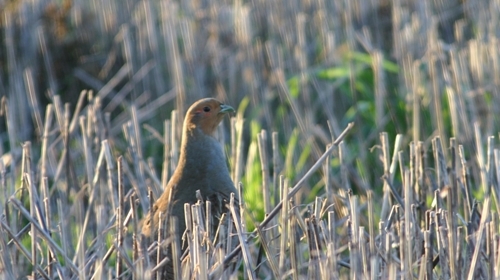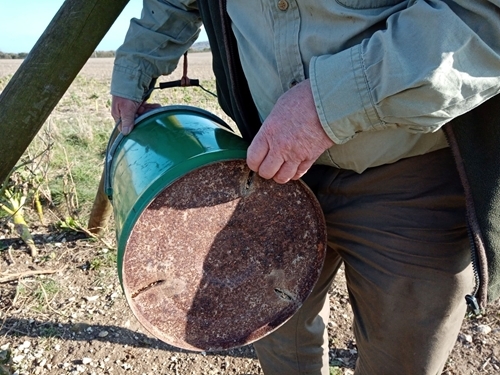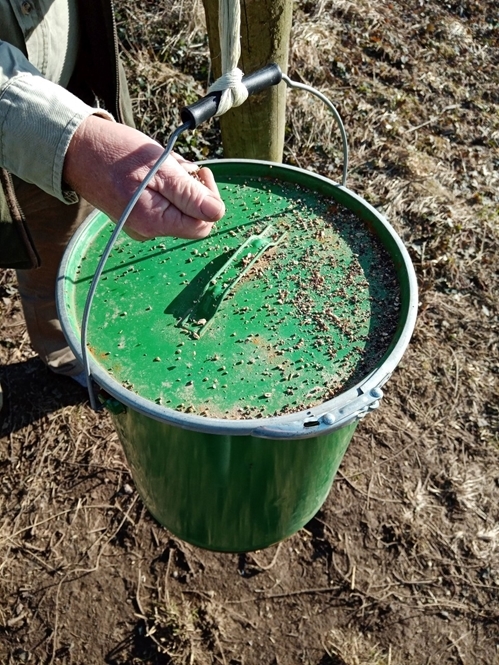
By Mike Swan, GWCT Head of Educaiton
In common with almost everyone else my shooting season has been badly compromised by Coronavirus restrictions. After a great summer for wild breeding, I was looking forward to something of a record season, but instead of five days plus one shared, we have enjoyed just three. The good news is that each of those was a howling success, with lots of (socially distanced) happy smiling faces. We also had more friends and newcomers along to beat and share the ambience than ever before, and all three days produced decent bags by our standards, with plenty of game for every family to take home the makings of a dinner party or two.
 Photo courtesy of Ian Smith
Photo courtesy of Ian Smith
The other silver lining is that we still have a good stock, with nice harems of pheasants forming around the territory holding cocks, and partridges pairing up too. All considered, provided I do the work between now and midsummer, I can hope to look forward to a good season in 2021. Please God, I’m not asking for miracles, can we just have an average spring and summer weather wise, and not a dismal one?
Right now my main project is rearranging the feeding. As the greys pair up, and the pheasants move to their breeding territories, so my hoppers move to cater for that. Rather than the feeding stations that I tend to run to bring birds together for shoot days, I am now spreading out my individual hoppers to wood edges, fencelines, hedgerows, pit holes, beetle banks and our single bank and ditch that runs as a winterbourne in the wettest years.
Filling the Hungry Gap
It has long been a gamekeeping tradition that February and March are hungry months, and that the keeper should provide a little food at this time of year. However, GWCT research back in the 1990s showed that the hungry time lasts much longer. Modern efficient farming and harvesting techniques mean that there are far fewer spilt grains and weed seeds than there used to be, and less variety in the farm cropping adds further pressure in many areas.
Comparing shoots that fed through till the beginning of June with ones that stopped sometime in March, my colleagues found that hen pheasants on fed sites on average fledged twice as many young. Being fitter after the rigours of incubation, when there are just a few minutes a day off the nest to feed, they make much better mothers compared to the emaciated unfed ones. This also means that if they loose their clutch during incubation, or the whole brood soon after hatching, they are much more likely to have another go.
All this is the basic reason why the GWCT recommendation to feed into May is also enshrined in the Code of Good Shooting Practice. But, there is another too, and it is perhaps especially important this year, when there may be a few more left over birds about. This is that where they are not fed, your birds are that much more likely to head off over the boundary and into the villages, where they may annoy the locals by raiding bird tables and scratching up newly sown vegetable patches.

Refining the design
Historically my feeding stations used to mostly have a rat colony near them at this time of year, but I have now pretty much cracked that (watch the video below to see how it's done). By using 25 litre metal drums with simple slots at the base, and hanging them so that rats and most other scavengers cannot reach the food, I have cut wastage to a minimum, and I rarely need to use rat poison. With just the odd rat to deal with, carefully sited traps do the job, and mean no rodenticide residues in other wildlife.
In my early days at GWCT I was taught this hopper design as the way to go, when hopper feeding was pretty much a new concept, but the feeders were simply nailed to a post. Set at knee high, the feeding slots were out of reach for most scavengers, but rats and grey squirrels could easily climb the post, and scratch food out. By hanging my feeders from branches, or suspending them with thick baler twine from a tripod of posts, I have now fooled both of these pests. If they climb down onto the feeder, they then simply slide down the side and fall off, without being able to get at the grub.

So, now pretty much the only wastage is a few grains that get spilled on the ground by the pheasants and partridges. The latter are not quite tall enough to reach the slots, but they quickly learn to hop up and peck, so their needs are still catered for. The few grains that get spilled are mostly mopped up straight away, and any that are left by the game will surely get picked up by yellowhammers, chaffinches and the like, so there is rarely anything on the ground for any rats when they emerge after dark.

A bit for the small birds
One weakness of this system is that there is probably less left for the songbirds than I would like, but I have overcome this by carrying a bucket of mixed grains in the truck. Using the top of each feeder as a bird table, and scattering a sprinkling on it each time I pass gives them a supplement without attracting vermin. I find that a mix of whole and kibbled wheat, plus rapeseed and a little millet seems to cater for most tastes. You could be more extravagant and add the likes of sunflower hearts and linseed if you wish.
Health and Hygiene
Keeping your birds in tip top condition by feeding well into the spring is great, but it is important to think hygiene too. Feeding birds in the same place for too long can result in a build up of parasite eggs in the soil at the feeding point, and end up infesting the birds with intestinal worms. If this happens, much of the extra productivity that you might have hoped for will be lost. So, always move your feeders by at least a few metres every three or four weeks.
At this time of year, with just a modest number of birds to feed, a well designed hopper should last this long between fills. If not, you probably have not got enough. The fact that they are close to empty makes moving them easier too. Resiting in this way also helps to fool any rats, which are much less good than birds at relocating a feeder after it has moved even just a short distance.
Making a good job of feeding from now till early summer is a great way for shoots to show that they really do care about their game, and much other wildlife too. The good news is that if it is done without significant waste to scavengers, it is also very cheap to do.
This Blog was first published as an article in Shooting Times.